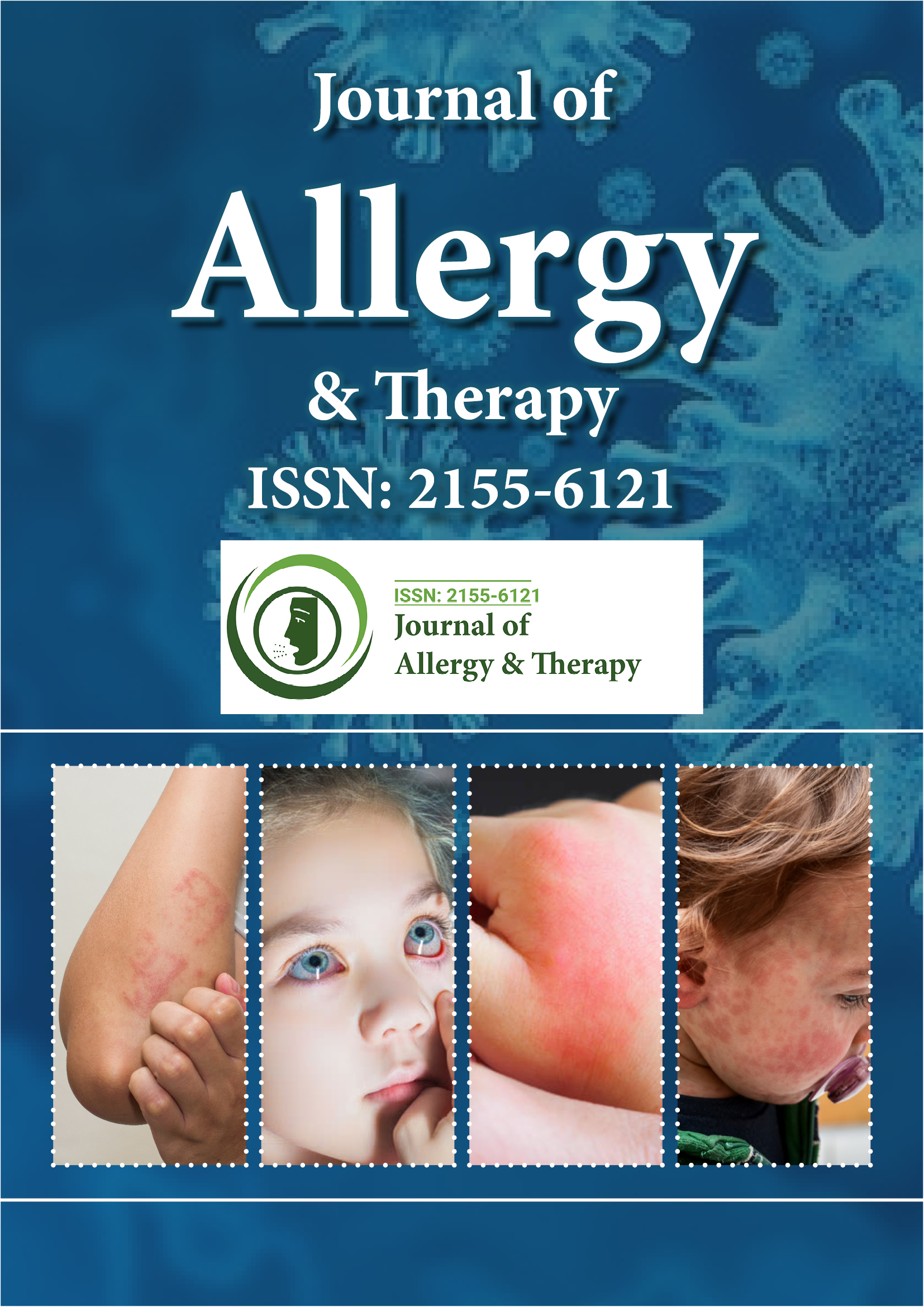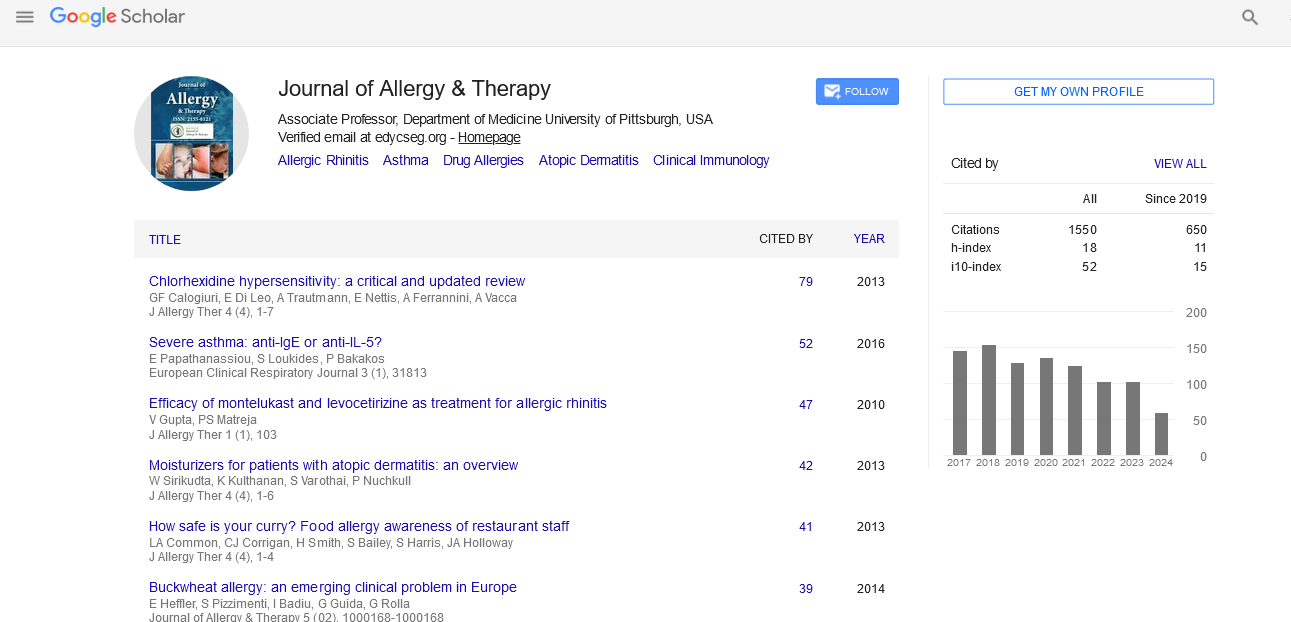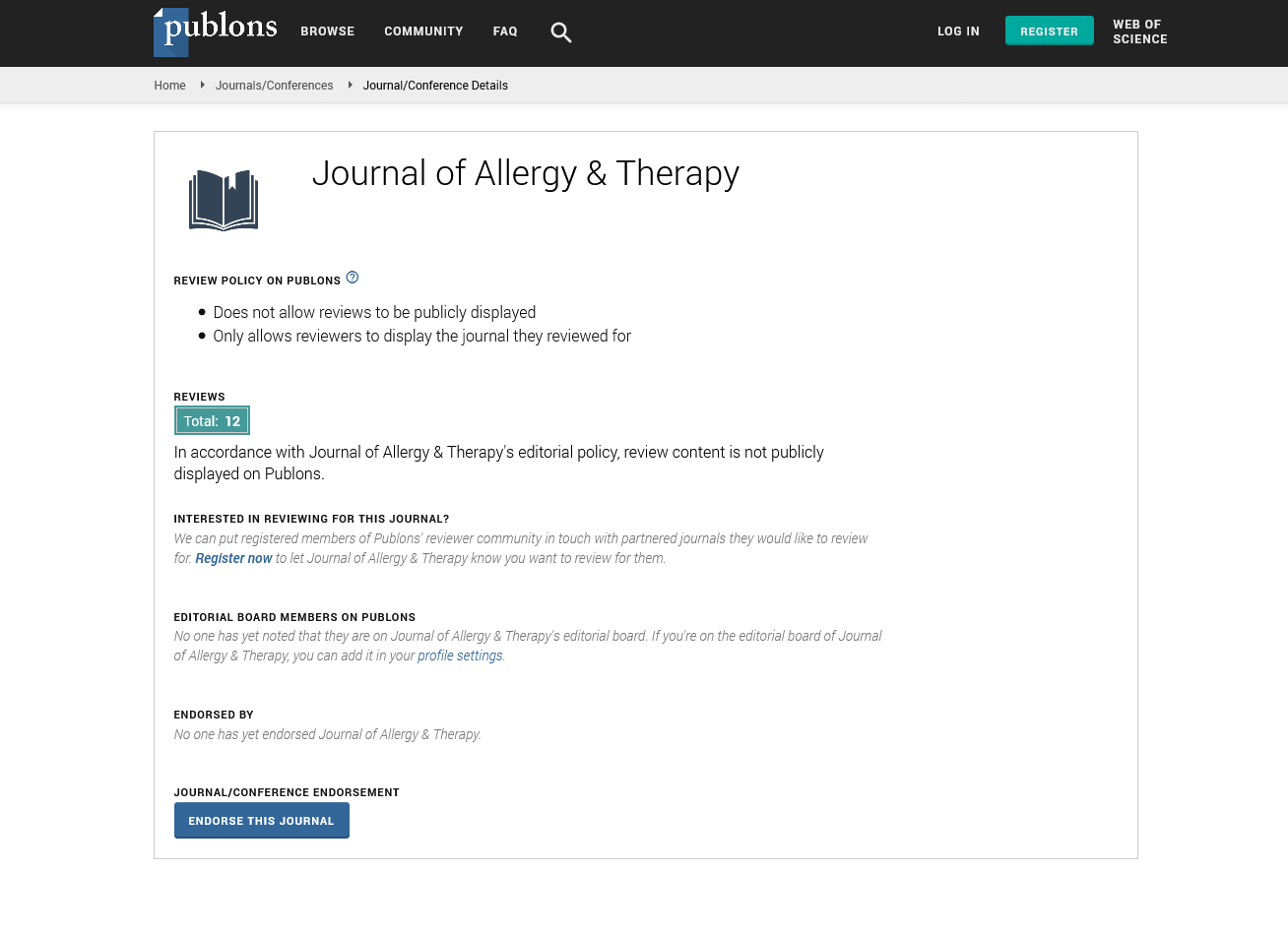Indexed In
- Academic Journals Database
- Open J Gate
- Genamics JournalSeek
- Academic Keys
- JournalTOCs
- China National Knowledge Infrastructure (CNKI)
- Ulrich's Periodicals Directory
- Electronic Journals Library
- RefSeek
- Hamdard University
- EBSCO A-Z
- OCLC- WorldCat
- SWB online catalog
- Virtual Library of Biology (vifabio)
- Publons
- Geneva Foundation for Medical Education and Research
- Euro Pub
- Google Scholar
Useful Links
Share This Page
Journal Flyer

Open Access Journals
- Agri and Aquaculture
- Biochemistry
- Bioinformatics & Systems Biology
- Business & Management
- Chemistry
- Clinical Sciences
- Engineering
- Food & Nutrition
- General Science
- Genetics & Molecular Biology
- Immunology & Microbiology
- Medical Sciences
- Neuroscience & Psychology
- Nursing & Health Care
- Pharmaceutical Sciences
Perspective - (2025) Volume 16, Issue 2
Understanding Atopic Dermatitis: Causes, Symptoms, Triggers, Management, and Long-Term Impacts on Health
Kiran Kumar*Received: 30-Apr-2025, Manuscript No. JAT-25-29454; Editor assigned: 03-May-2025, Pre QC No. JAT-25-29454; Reviewed: 16-May-2025, QC No. JAT-25-29454; Revised: 23-May-2025, Manuscript No. JAT-25-29454; Published: 30-May-2025, DOI: 10.35248/2155-6121.25.16.425
Description
Atopic dermatitis, commonly known as eczema, is a chronic inflammatory skin condition that affects millions of people worldwide, particularly children. It is characterized by dry, itchy, red and inflamed skin that can cause significant discomfort and affect a person’s quality of life. Atopic dermatitis is part of the “atopic triad,” which includes asthma and allergic rhinitis, suggesting a strong genetic and immunological component in its development. Though it can affect individuals at any age, it most often begins in early childhood and can persist into adulthood or recur later in life. Understanding the complex causes, symptoms and management strategies is crucial to controlling this often frustrating and persistent condition.
The exact cause of atopic dermatitis is not fully understood, but it is believed to result from a combination of genetic predisposition, immune system dysfunction, environmental factors and a compromised skin barrier. People with a family history of eczema, asthma, or hay fever are more likely to develop atopic dermatitis, indicating a strong hereditary link. In individuals with this condition, the skin’s barrier function is impaired, leading to increased trans epidermal water loss and decreased protection against irritants, allergens and microbes. This makes the skin more vulnerable to inflammation and infection, contributing to the characteristic flare-ups of the disease.
Symptoms of atopic dermatitis can vary depending on age, severity and body location, but the most common features include intense itching, dry or scaly skin, red patches, thickened or leathery skin from chronic scratching and in some cases, oozing or crusting lesions. In infants, the condition typically appears on the face, scalp and extensor surfaces of the limbs. In older children and adults, it more commonly affects the creases of the elbows, knees, neck and hands. The itch-scratch cycle where itching leads to scratching, which then worsens the skin damage and inflammation is a hallmark of atopic dermatitis and often contributes to sleep disturbances and emotional distress.
Several environmental and lifestyle triggers can exacerbate atopic dermatitis. Common irritants include soaps, detergents, fragrances, wool fabrics and harsh weather conditions such as cold, dry air or excessive heat and humidity. Allergens such as dust mites, pollen, mold and pet dander can also provoke flareups, especially in those with coexisting allergic sensitivities. Stress, infections, sweating and hormonal changes are additional factors that may contribute to disease activity. Identifying and avoiding personal triggers is a key aspect of managing the condition and preventing exacerbations.
Diagnosis of atopic dermatitis is usually based on clinical evaluation by a healthcare provider. A detailed medical history, symptom description and physical examination of the skin are typically sufficient for diagnosis. There are no definitive laboratory tests for atopic dermatitis, but tests such as serum levels or skin prick tests may be used to assess allergic sensitizations in some cases. It is important to differentiate atopic dermatitis from other skin disorders such as psoriasis, contact dermatitis, seborrheic dermatitis, or scabies, which may have overlapping features.
Management of atopic dermatitis requires a multifaceted approach aimed at reducing inflammation, relieving itching, repairing the skin barrier and preventing future flare-ups. The foundation of treatment involves consistent use of moisturizers or emollients to hydrate the skin and restore its protective function. These should be applied frequently, especially after bathing, to lock in moisture. Bathing practices should include the use of mild, fragrance-free cleansers and lukewarm water, followed by immediate miniaturization.
Topical corticosteroids are the mainstay of anti-inflammatory treatment during flare-ups and are prescribed in various strengths depending on the severity and location of the lesions. Non-steroidal options such as topical calcineurin inhibitors (tacrolimus and pimecrolimus) may be used for sensitive areas like the face and neck or for long-term maintenance. In more severe cases, systemic therapies including oral corticosteroids, cyclosporine, methotrexate, or biologic agents like dupilumab may be considered. Antihistamines may help with itching and sleep disturbances, although they are not effective for inflammation itself.
Infection control is another critical aspect of care, as individuals with atopic dermatitis are more susceptible to bacterial, viral and fungal infections. Staphylococcus aureus colonization is common and can worsen inflammation. In cases of infection, antibiotics or antiviral medications may be required. Education on proper skin care, trigger avoidance and early recognition of flare signs empowers patients and caregivers to take an active role in managing the condition.
The psychological and social impacts of atopic dermatitis should not be underestimated. The chronic itching, visible lesions and frequent flare-ups can lead to embarrassment, low self-esteem, anxiety and depression, particularly in children and adolescents. Sleep disturbances are common due to nighttime itching, which can affect cognitive function, behavior and academic performance. Support from healthcare professionals, mental health counseling and patient advocacy groups can provide important resources for coping with the emotional burden of the disease.
Recent advances in research have improved our understanding of the immune pathways involved in atopic dermatitis, leading to the development of targeted biologic therapies. Ongoing studies continue to explore the role of the skin microbiome, genetic mutations and environmental exposures in disease progression. Early intervention, especially in high-risk infants, is an area of growing interest, with studies investigating whether early skin care routines or dietary interventions can prevent the onset of eczema.
Conclusion
In conclusion, atopic dermatitis is a chronic, relapsing inflammatory skin disease that requires careful, individualized management. By combining skin barrier repair, antiinflammatory treatments, infection control and lifestyle modifications, many individuals can achieve significant relief and maintain long periods of remission. Continued research and public awareness are essential to improving outcomes and supporting those affected by this common yet complex condition.
Citation: Kumar K (2025) Understanding Atopic Dermatitis: Causes, Symptoms, Triggers, Management and Long-Term Impacts on Health. J Allergy Ther. 16:425.
Copyright: © 2025 Kumar K. This is an open-access article distributed under the terms of the Creative Commons Attribution License, which permits unrestricted use, distribution and reproduction in any medium, provided the original author and source are credited.


